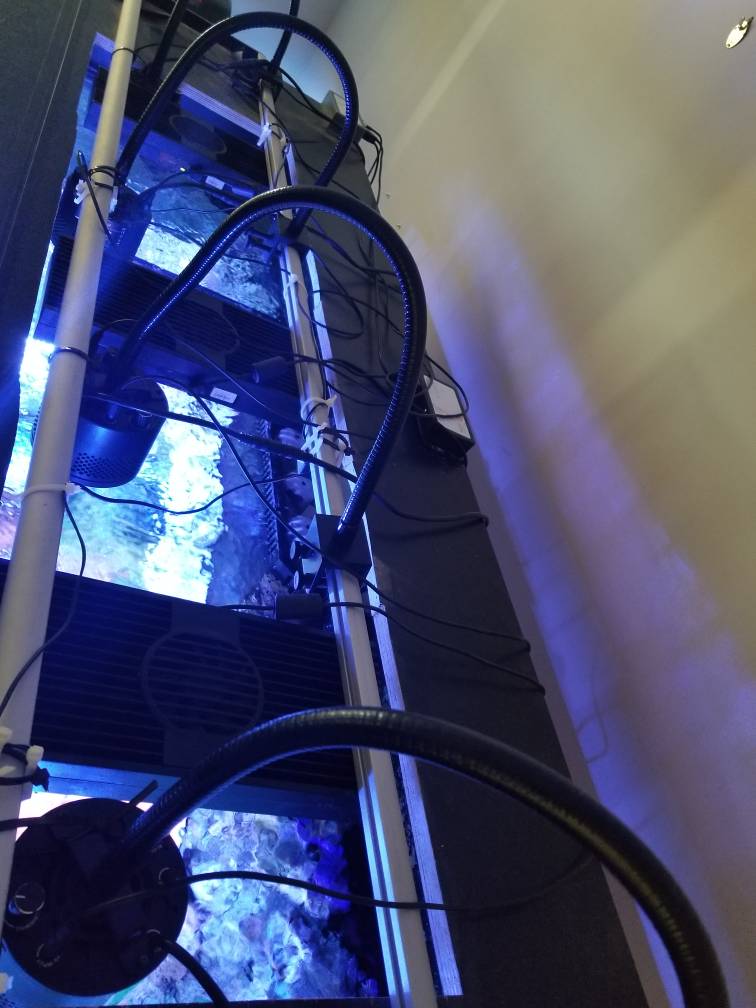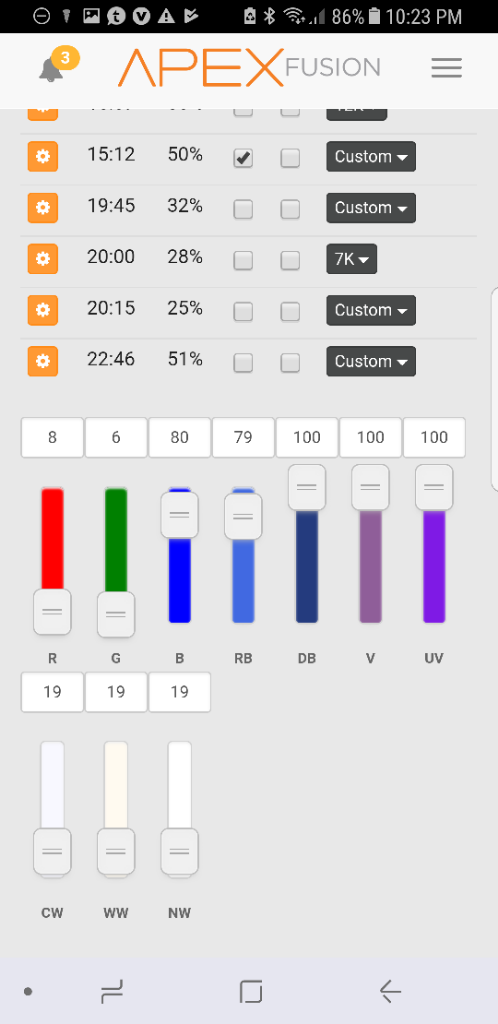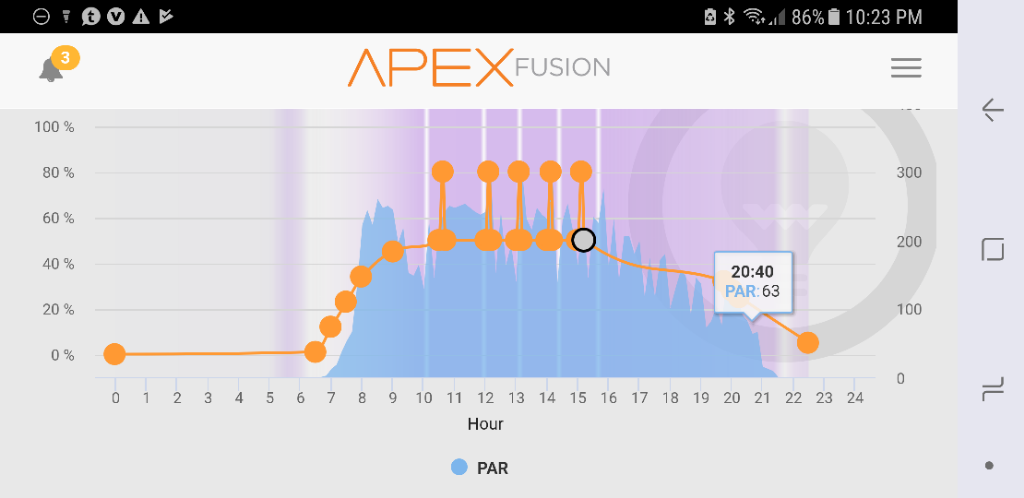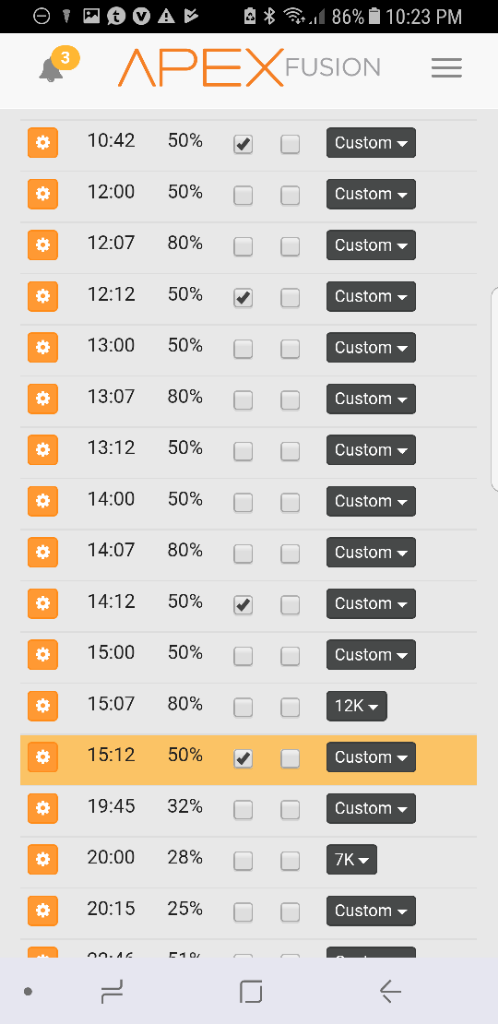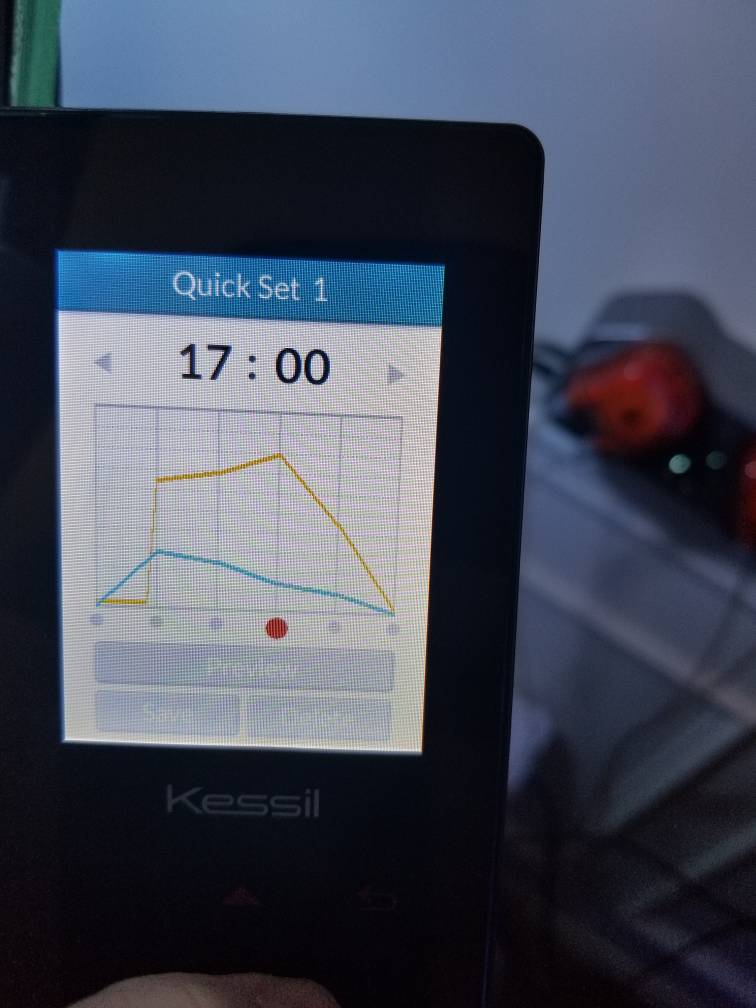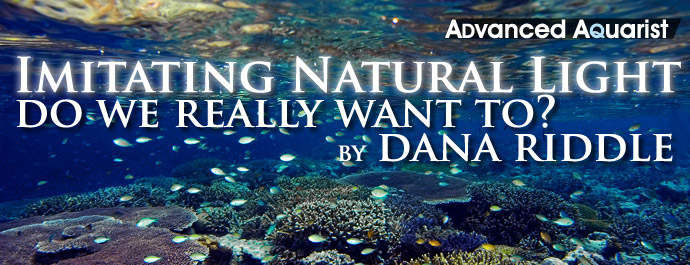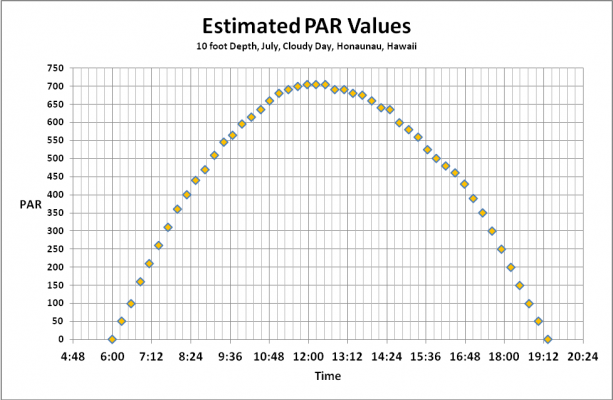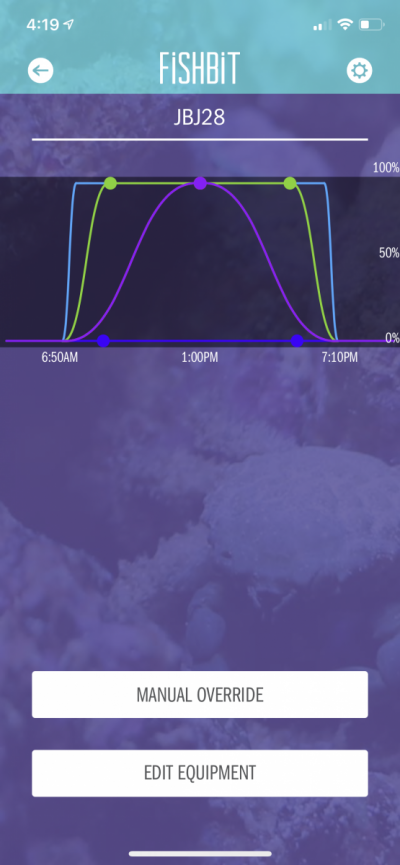I have been experimenting with variable lighting intensity for some time now and have gotten what I consider to be acceptable growth in the early testing and am now adding more SPS to my 2 year old tank in what may end up being a more extensive test.
I know there is at least one coral farm which oscillates its light intensity from very high par numbers to very low par numbers throughout the day.
I have also read that sps do a fair amount of their encrusting at night. I have even seen split schedules where they run day and night cycles 12 hours at a time instead of 24 hours.
I have long ran pretty regular cloud simulation which effectively varies the light about 50% of the time on an hour to hour basis, and even within that, I have higher periods of brightness oscilate through the day even with the cloud simulation.
I do for slightly different reasons as I am attempting to get some extra light to some of the corals on the bottom and corners, but in a way that wont just fry zoas and lps.
It is a unique challenge as I am doing a mixed reef and most either go lps or sps these days.
At any rate, I am wondering if anyone knows of any actual science between these ideas....theoretical or practical.
I consider the coral farm that does it to already be one practical example.
Thanks everyone.
I know there is at least one coral farm which oscillates its light intensity from very high par numbers to very low par numbers throughout the day.
I have also read that sps do a fair amount of their encrusting at night. I have even seen split schedules where they run day and night cycles 12 hours at a time instead of 24 hours.
I have long ran pretty regular cloud simulation which effectively varies the light about 50% of the time on an hour to hour basis, and even within that, I have higher periods of brightness oscilate through the day even with the cloud simulation.
I do for slightly different reasons as I am attempting to get some extra light to some of the corals on the bottom and corners, but in a way that wont just fry zoas and lps.
It is a unique challenge as I am doing a mixed reef and most either go lps or sps these days.
At any rate, I am wondering if anyone knows of any actual science between these ideas....theoretical or practical.
I consider the coral farm that does it to already be one practical example.
Thanks everyone.









